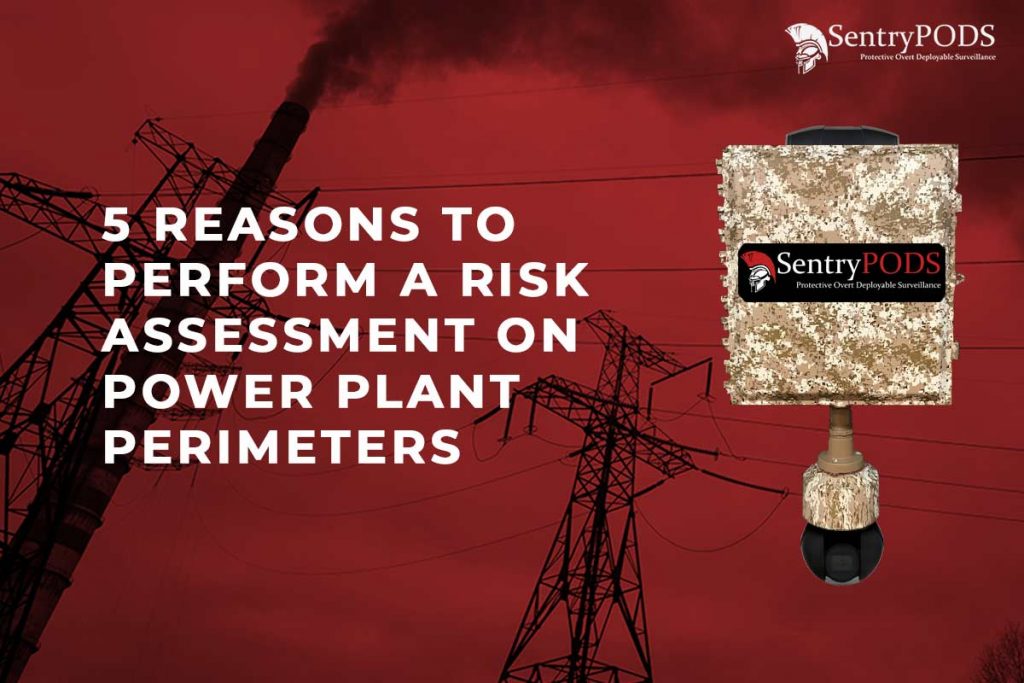5 Reasons To Perform A Risk Assessment On Your Power Plant Perimeter

If you’re trying to protect high-dollar equipment or keep people at a distance from high-security areas that contain sensitive information, you need to invest in quality perimeter security. Critical infrastructure sites, including energy and power plants, need to protect physical assets as well as data and other proprietary information. Performing routine power plant perimeter checks at these facilities is a necessary first step to securing the nation’s power supply from theft and vandalism. With that being said, the need for critical infrastructure surveillance continues to grow.
Why Is A Risk Assessment Necessary For Power Plant Perimeters?
The energy sector, with all its supporting infrastructure, is a target for theft and vandalism. The nation’s electric grid is complex and includes more than 7,300 power plants, 160,000 miles of high-voltage power lines and millions of miles of low-voltage lines, and countless substations and transformers. The remote sites of many utility facilities make them more susceptible to attack with less risk of detection. For that reason, performing a a power plant perimeter risk assessment is important to mitigate the following scenarios:
- Prevent theft, vandalism, and terrorist acts – physical barriers like fences or control access gate systems at entrances and exits act as the first line of defense for keeping bad actors out of a facility.
- Prevent local service disruptions – disruption to power plant operations or an attack on local grids means that homes, businesses, schools, and hospitals would be without power and unable to provide services for an undetermined length of time. Additionally, many emergency and police services would not be able to operate or respond to emergencies without power.
- Deter intruders from entering sensitive areas – ensuring that only authorized personnel enter restricted areas is critical to maintaining security at power plants and preventing individuals from accessing computer systems and launching a cyberattack.
- Monitor environmental hazards – advances in technology have allowed surveillance systems to integrate with existing operational systems. This enables operators to monitor and prevent fires or explosions on site before they happen.
- Prevent a national grid collapse – while it may seem far-fetched, monitoring the perimeter for weak points ensures that people who should not have access to restricted areas cannot enter and do harm. If compromised, the computers at these facilities could shut down the facility or trigger a collapse of the national grid.
Power Plant Perimeter Security Measures
Over the past decade, advances in technology have helped increase the scope of perimeter security systems. These advances have benefited security operations at many high-risk sites, including power plants. Common security measures include physical barriers like fences, physical patrols of the perimeter, video surveillance systems, and advanced monitoring that allows operators to have access to their facility 24/7, even if they are not on-site, to assess problems and address security breaches.
While traditional wisdom said a perimeter fence was enough to get the job done, today’s environment has taught us that a simple fence is not enough. Instead, network video surveillance offers versatile and layered perimeter protection that allows you to monitor what’s going on within your critical infrastructure site in real time. This cost-effective security measure allows operators to be proactive and quickly respond to a situation. Additionally, surveillance cameras that are visible and prominently placed at strategic points around the perimeter deter unwanted activity simply by alerting criminals to the fact that they are being watched.
Thermal Cameras: An Advanced Perimeter Solution
With so many advances in technology, it is often difficult to know which surveillance system to employ. Power plants have been using thermal cameras for years, both to monitor equipment and detect intruders. When used in combination with perimeter fencing, thermal cameras provide a superior perimeter protection system. Thermal cameras are uniquely adept at monitoring the perimeter for the following reasons:
- Thermal cameras are not dependent on light. Instead, they produce video images based on heat radiation emitted by objects and individuals. They can see in complete darkness, smoke, light fog and rain, and foliage.
- Thermal cameras detect the smallest differences in heat signatures, which are reflected in the high-contrast images they produce. These sharper images lead to higher-performing video analytics, quicker intrusion detection, and lower false alarm rates.
- Thermal cameras have wider field of views and optimal zoom capabilities, which are ideal for intrusion detection. Thermal cameras can detect individuals at far greater distances than visible cameras, providing an early warning to security teams so that they can respond before suspicious individuals reach the fence line.
While the risks to power plants and supporting utilities cannot be overemphasized, the advanced technologies and security systems that are on the market today provide exceptional perimeter protection. After performing a risk assessment of the facility’s perimeter, operators can decide which combination of physical security measures and technology will protect critical infrastructure and keep the nation’s lights on.
For more information on video surveillance options for critical infrastructure, click here.

Brent Canfield
CEO and Creator of SentryPODSBrent Canfield, CEO, and founder of Smart Digital and SentryPODS, founded Smart Digital in 2007 after completing a nine-year active-duty career with the United States Marine Corps. During the 2016 election cycle, he provided executive protection for Dr. Ben Carson. He has also authored articles for Security Info Watch.

